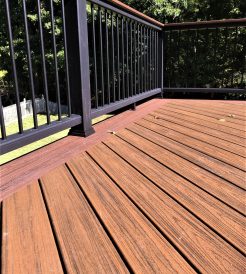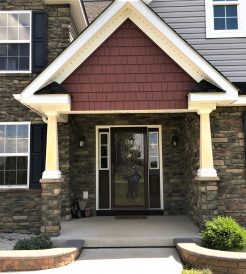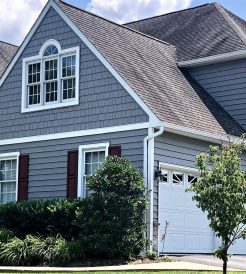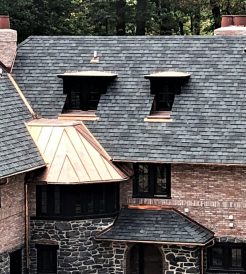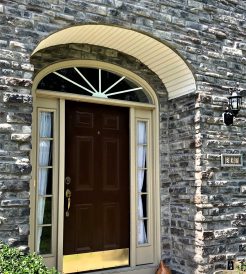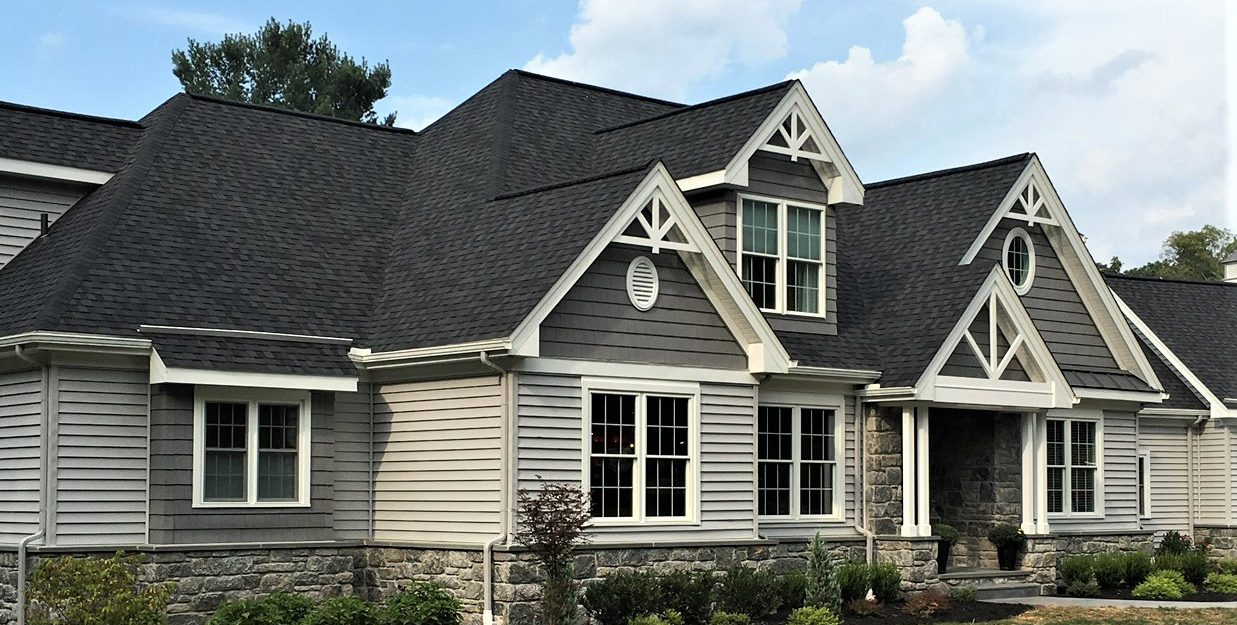As the summer months arrive many homeowners begin noticing dirt buildup, imperfections, and even damage to their siding that happened during winter and spring. These months can be tough on your siding, and many homeowners don’t know how cleaning or repair techniques differ across different types of siding. Today we’re going to take a look at how to restore your siding to its former glory, and decide when it’s time for a full replacement.
Inspecting Your Siding
The first step in cleaning any siding type is inspecting for mold, mildew, or dirt buildup. It is also important to identify areas where your siding is exposed to excessive amounts of moisture. Things that can expose your siding to moisture include sprinklers, runoff from downspouts or gutters, and mulch buildup at the base of your home.
How to Clean LP Smart Siding
At E&E we use LP Smartside Siding, which is notoriously easy to clean and care for. If cleaning is necessary, use a cloth, sponge, or soft bristled brush. LP recommends a cleaning solution of three parts water and 1 part white vinegar in a guide on their website.
Cleaning Diamond Kote Siding
Diamond Kote Siding is built on LP Smart Siding, and makes a durable product even more resistant to weather and fading. The cleaning process is very similar to LP Smartside, simply wash with water and a mild detergent with a soft cloth or sponge. There are some unique recommendations for touch up painting, you can read all about it in their care and maintenance guide.
Repairing LP Smart Siding
Small chips, scratches, and imperfections on vinyl siding can usually be repaired by simply touching up with matching paint. You should also check the seams of your vinyl siding to locate any caulk that has dried, cracked, or lost its seal. You can learn to recaulk your own siding with this handy guide, or contact a professional contractor.
How to Clean Vinyl Siding
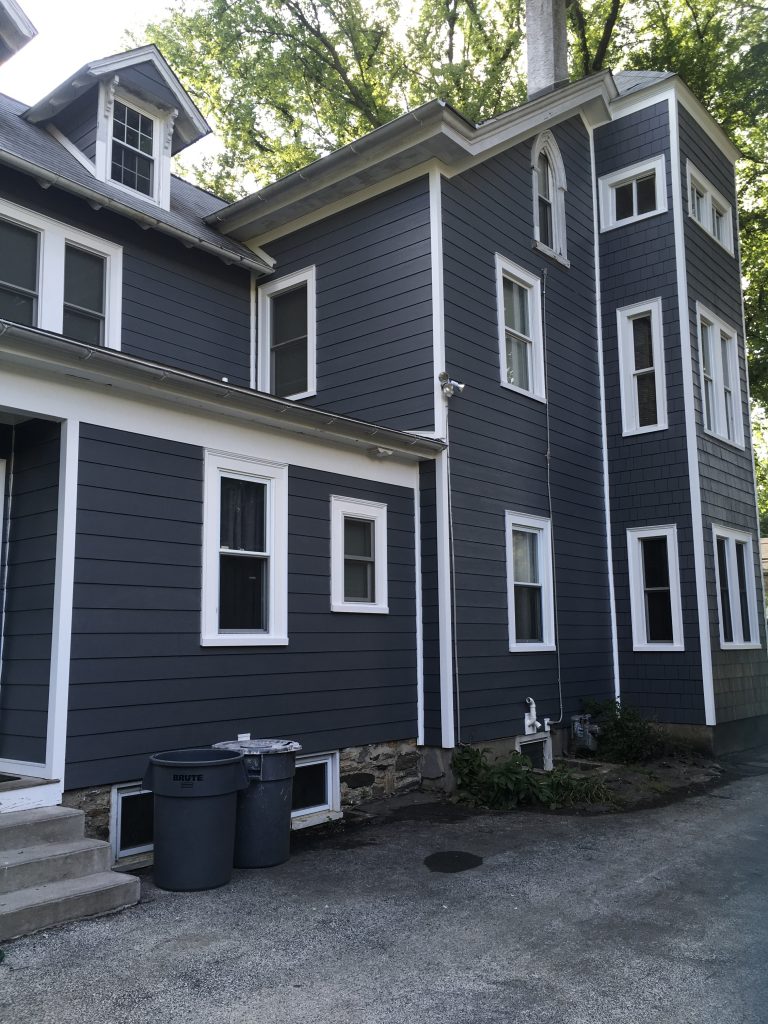
To clean vinyl siding use a soft bristled brush that will get dirt and grime from the faux wood grain without damaging the finish. There are lots of vinyl siding cleaning solutions on the market, but you can also use Murphy’s Oil Soap, Fantastik, or Windex. You can power wash vinyl siding, but you should be sure to read your power washer’s instruction manual carefully so you don’t damage the siding.
Repairing Vinyl Siding
Vinyl siding can be prone to cracks and holes, especially in heavily wooded areas. Here is a great guide if you plan on tackling the job yourself, but we recommend hiring a professional contractor.
How to Clean Cedar Siding
The beauty of cedar siding is very appealing, but it requires more maintenance than vinyl or fiber-cement. Many of the stains used to bring out the beauty of the cedar attract algae, mildew, and mold. To clean cedar siding we recommend using oxygen bleach. It’s tough on mildew, and won’t harm your plants located close to the home. Load the Oxygen Bleach in a garden sprayer, scrub with a brush, and rinse.
Cedar Siding Maintenance
Small holes and imperfections in cedar siding can be repaired with wood putty. Apply the putty with a putty knife, work it into the damaged area, and allow it to dry for the recommended time. Once it dries, simply sand it down until it is flush with the wood. If you need to replace damaged or rotting planks follow this guide, or contact a professional contractor.
Cleaning Fiber Cement Siding
Fiber cement siding is often considered to be the most durable siding on the market, and shouldn’t require much maintenance to maintain its beauty. Things like dirt and mulch buildup can usually be cleaned by simply hosing the siding down with water. If you notice mold and mildew building up use a mildew specific cleaner, your garden hose, and a soft cloth or sponge. Fiber cement siding should never be pressure washed, it can damage the finish. For more information on cleaning fiber cement siding check out James Hardie’s website.
Fiber Cement Siding Maintenance
Be sure to check the seams of your fiber-cement siding and remove and replace any dried or damaged caulk. James Hardie recommends using permanently flexible caulk, which is usually stated on the label. Chips and cracks can be filled in with a cementitious patching compound, which can be used for cracks and holes up to .25” deep.
When to Fully Replace Siding
It’s a tough decision to make, but sometimes your siding is beyond cleaning or minor repairs and needs to be fully replaced. We have outlined a few key signs that point towards a complete siding replacement below.
- Excessive Rot: If your siding is showing signs of significant rot it could mean that there is moisture getting in behind the siding. In this case, we usually recommend a full siding replacement.
- Significant Damage: If your siding has been damaged in multiple places by a storm or excessive wind, it may be more cost effective to replace your siding. Patching siding is a temporary fix, but the cost of repeatedly patching siding can quickly add up.
- Increase the Value of Your Home: If you are thinking about putting your house on the market a full siding replacement is a great way to entice buyers and increase the value of your home. According to Remodeling Magazine, homeowner
At E&E we are experienced in siding repair and replacement, and work with vinyl, cedar, Diamond Kote, and Fiber-Cement siding. Contact us for a complimentary estimate, we would love to assess your siding and recommend next steps.

